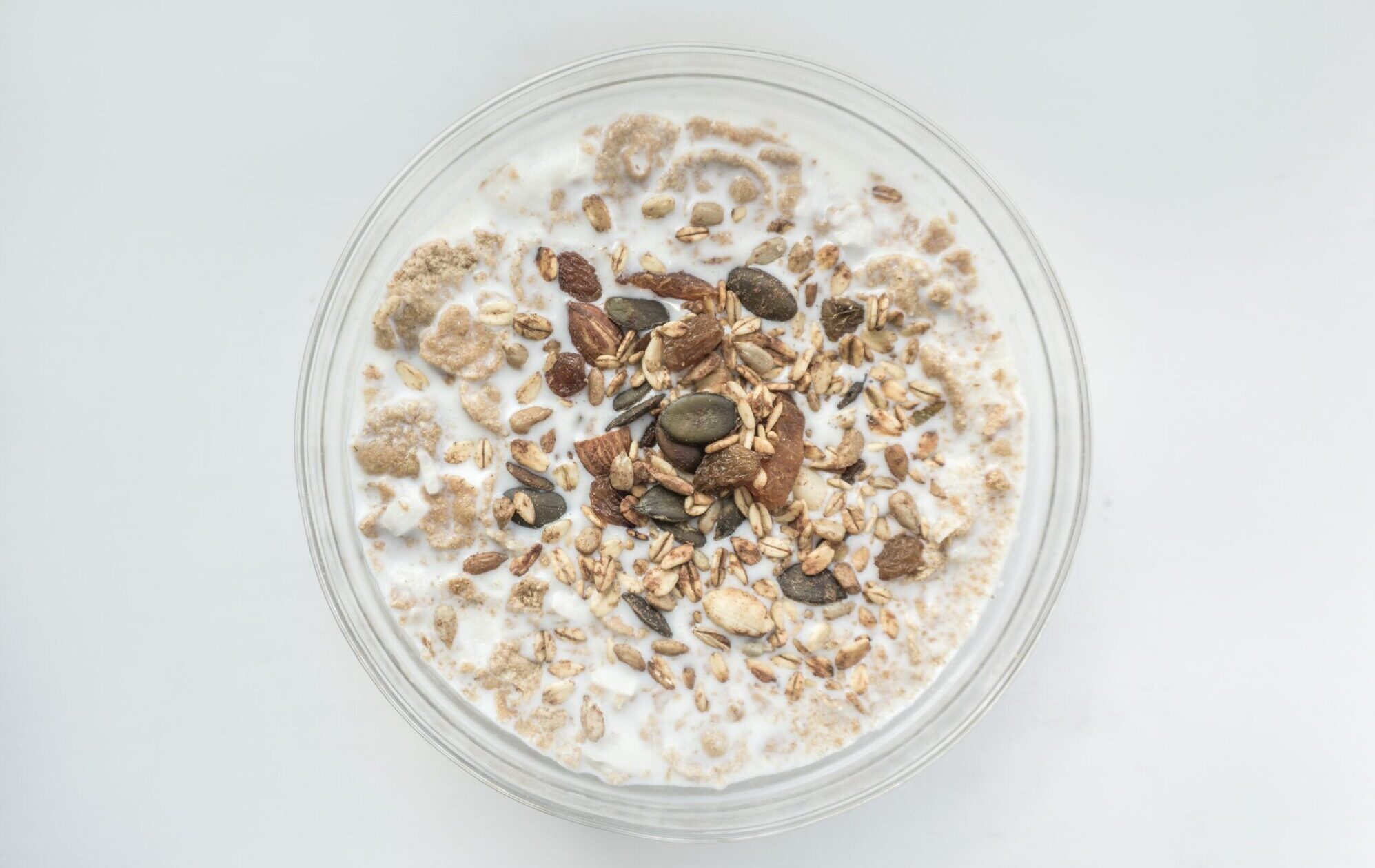

There’s been a real uptick in gluten-free labels at the grocery store, including on drinks and snacks you know shouldn’t have any gluten to begin with. But if you’ve made fun of gluten-free oats, you might want to take back that joke.
Oats are naturally gluten-free, but research suggests the vast majority of the bags you see in supermarket aisles have high enough levels to poison someone with celiac disease. Not many people have any idea why this is, but now that we’re squeezing milk out of our oats, it might pay to know a little more about this mysterious association between oats and gluten.
Do oats have gluten?
There are two categories of foods that contain gluten:
- Grains that naturally have it (i.e. wheat, barley, and rye), plus anything derived from those grains that’s not specifically processed to remove the gluten (some food in Europe is sold with gluten-free wheat starch, for instance, which has the gluten taken out).
- Foods that shouldn’t have gluten, but end up contaminated at some point in their production.
[Related: Is corn a fruit, vegetable, or grain?]
Oats fall into the second category, mostly because they’re often grown alongside or in rotation with wheat, then processed on machinery shared with gluten-containing grains. For the vast majority of farmers, this isn’t a problem. If a few wheat seeds (or rye or barley seeds) get into your oats, they won’t have a huge impact on the final product’s taste or texture, especially if that lot is destined to become flour. This can occur with oat-derived food items as well, including rolled oats, instant oatmeal, and oat milk, meaning they aren’t always gluten-free.
Can gluten in oats trigger an allergy?
It’s easy to feel like people are just being overly dramatic about gluten contamination. What’s one bit of barley in a whole field of oats?
But if you have celiac disease, that one little gluten-containing seed matters a lot. The limit to call something “gluten-free” in the US is 20 parts per million (ppm) of gluten to total product. That means for every million oat granules, you have to have less than 20 gluten-containing grains.
That’s why studies analyzing the gluten in standard commercial oats have consistently found they’re not safe for celiacs. One 2022 study focused on oat flour, rolled oats, and instant oats with gluten-free labels found contamination in up to 40 percent of the samples. Another looking specifically at unlabeled Canadian oats (many of which make their way to the US), found gluten in 88 percent of the 133 samples tested. That means if you’re really sensitive to gluten or you have celiac disease, you can’t trust any oats, even if it has the “gluten-free” branding.
Are there any real gluten-free oats?
To eliminate those gluten-containing seeds, producers either have to sort them out or grow the oats in their own separate field, and in both cases, the rest of the oat processing has to be done on dedicated machines in buildings that never see any glutinous grains. That means most of the oats produced in America have some gluten in them—it’s just too time-consuming and expensive for most growers to bother.
More manufacturers have started producing gluten-free oats, but there’s a lot of discussion within the celiac community about just how safe each of the two methods are. Most of the large manufacturers, like Bob’s Red Mill and General Mills, use a mechanical (also called optical) sorting method to physically remove contaminants from the oat supply. Some people with celiac argue that’s not good enough because the sorting simply isn’t sufficiently thorough.
[Related: These are the most common allergies (and the deadliest)]
You’ve probably never seen a wheat seed—it’s almost always processed into flour first—but they look a lot like oats, as do rye and barley seeds. That makes them very challenging to sift out using a machine. Manufacturers get their gluten-free certification by analyzing roughly 20 samples, then averaging the results together, but that can mean that some lots have gluten above the 20 ppm mark. As long as the average is low enough, the manufacturer still passes the test.
That said, lots of manufacturers may not have that issue—all of their samples may be under the limit. You just can’t know that for sure. Many celiacs eat gluten-free oats with no problems, but if you’re worried about it, you can choose to only eat oats that have been produced under the purity protocol, which involves growing them entirely separately from any grains containing gluten (you can see a list of those manufacturers on the independent, consumer-focused Gluten Free Watchdog website). It’s all a matter of just how safe you want to play it.
Oats are a surprisingly complicated issue, but if you can work them into your diet they’re an excellent source of whole grain fiber—and everyone could use a little more of that.
This post has been updated. It was originally published on December 10, 2019.
